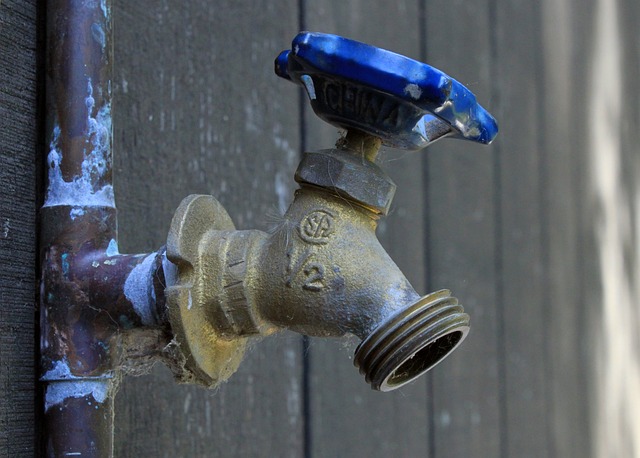Discover the ten ways mold growth, moldy, and mold spores can disrupt your plumbing system, sink drain, and cause health problems with effective prevention strategies. Mold infestations in your plumbing can lead to costly damages and health risks in your house. Learn how to safeguard your plumbing from mold proliferation with practical tips and proactive maintenance. Protect your home from the detrimental effects of mold growth by implementing the preventive measures outlined in this comprehensive guide. Stay informed on the warning signs, causes, and solutions to combat mold in your plumbing system effectively.
Table of Contents
ToggleUnderstanding Mold and Moisture
Mold Sources
Identify mold sources by checking for leaks and condensation. Leaks in pipes or roofs in a house can create moisture buildup, leading to moldy environments. Condensation on windows or walls is another breeding ground for mold.
Mold can also grow in damp areas like bathrooms, kitchens, basements, attics, and cottages in a home. These basement spaces in a home are prone to moisture accumulation due to poor ventilation or water seepage. Regular inspections can help detect mold early.
Moisture and Mold Growth
Excess moisture in the air provides the perfect conditions for mold growth. When moisture levels rise above 60%, it creates a conducive environment for mold spores to germinate and spread. Addressing moisture issues promptly can prevent mold infestations.
Controlling moisture involves fixing leaks, improving ventilation, using dehumidifiers, and ensuring proper insulation. By reducing moisture, you can significantly inhibit mold growth in your plumbing system.
Importance of Controlling Indoor Humidity
Maintaining optimal indoor humidity levels is crucial in preventing mold growth. High humidity levels promote moldy conditions, especially in areas with poor ventilation. Keeping indoor humidity below 60% inhibits mold proliferation.
To control indoor humidity, consider installing exhaust fans in bathrooms and kitchens, using air conditioners during humid weather, and ensuring proper airflow throughout your home. Monitoring indoor humidity levels with a hygrometer can help you take timely action against excessive moisture.
Why Mold Targets Plumbing Systems
Ideal Conditions
Plumbing leaks create a perfect environment for mold to thrive due to the presence of moisture. When pipes leak, water accumulates, providing the necessary dampness for mold growth. The combination of darkness and moisture in plumbing systems offers an ideal breeding ground for mold spores.
Hidden Susceptibility
Hidden pipes within walls or under floors are particularly vulnerable to mold growth. Since these areas are not easily visible or accessible, leaks can go unnoticed for extended periods, leading to significant mold infestations. Mold can spread extensively in these concealed spaces before its presence is detected, causing severe damage to the plumbing system.
Thriving in Dampness
Mold thrives in damp areas of the plumbing system where moisture levels remain consistently high. Damp conditions promote the rapid reproduction of mold spores, leading to widespread contamination within the pipes and fixtures. The combination of organic materials present in plumbing systems and persistent moisture creates an ideal habitat for mold colonies to flourish.
Identifying Mold in Your Plumbing
Look for mold that you can see, like dark patches in your sink or shower. Smelly odors coming from your pipes might mean there’s mold. To find hidden mold, watch out for mysterious leaks or wet spots in your plumbing.
Here are the 10 Ways Mold Growth Can Wreak Havoc on Your Plumbing System and How to Prevent It
1. Mold growth in drain pipes
Mold growing in drain pipes can cause many problems. It can make drains slow and smelly. Mold can also make pipes weak, which might lead to leaks. To stop mold in drains, clean them often with vinegar and baking soda. Use special cleaners that break down dirt to avoid mold. Keep bathrooms and kitchens well-ventilated to stop mold from growing. If there is mold in drain pipes, it can be bad for health. Breathing in mold spores might cause allergies and breathing issues like coughing. Being around mold for a long time could even lead to serious problems like asthma or fungal infections.
To know if there is mold in drain pipes, look for musty smells from drains, black spots or slime in pipes, or more bugs near drains. Fixing these signs quickly can stop big damage to the plumbing system.
2. Mold in toilet tanks and bowls
Mold in the toilet tank can cause bad smells and affect the water quality. Mold likes wet places, so it grows easily in the tank. It can make the flushing not work well and even block it. Cleaning the tank often with vinegar and water helps stop mold. Also, make sure the bathroom has good airflow.
The mold in the toilet bowl looks gross and is not clean. It spreads fast in damp areas. To stop mold, clean the bowl often with bleach or special cleaners. Use a toilet brush to scrub it and flush after using it. Keep the bathroom dry by using a dehumidifier. Cleaning the toilet tank and bowl regularly helps prevent mold. Keep the bathroom dry and use bleach to clean mold effectively.
3. Mold in water supply lines
Mold is a sneaky fungus that can grow in wet and dark places like your pipes. It can weaken your pipes and cause leaks and health problems if you breathe it in. To stop mold, check your pipes often for any signs of mold or water. Keep areas dry around your plumbing to stop mold from growing. Fix leaks right away to prevent more damage. Using a water filter can help keep your pipes clean. It’s easier and cheaper to prevent mold than to deal with a big problem later. Keep an eye out and keep things dry to protect your pipes and health from mold.
4. Mold in sewage systems
Mold found in sewage systems can make you sick because it has bad germs. Sewage problems can cause mold to grow, making things smell bad and ruining the structure. To stop mold in sewage systems, regularly check and fix septic tanks and plumbing issues. Make sure there’s good airflow to keep things dry and stop mold from growing. Check pipes often for clogs or leaks. Put in backwater valves to prevent sewage from backing up. Use materials that resist mold in sewage systems. If there’s sewage mess and mold, act fast. Get pros to clean up and sanitize the area safely. Wear protective gear like gloves and masks. Throw out dirty stuff and clean everything well.
5. Mold in bathroom fixtures (showerheads, faucets, etc.)
Mold likes wet places, such as showerheads and faucets in bathrooms. These spots are perfect for mold to grow because they are always damp. Mold can make black spots on these fixtures. Breathing in mold from showerheads and faucets can make you sick and cause allergies. To stop mold from growing in bathroom fixtures, make sure there is enough air moving around. Cleaning these fixtures regularly is also important. Using materials that resist mold can help too. To clean mold from showerheads and faucets, mix vinegar and water. Check these fixtures often for mold to prevent it from spreading and causing damage to your plumbing.
6. Mold in kitchen sink pipes
Mold can grow in kitchen sink pipes when there are leaks and too much water from dishes or food bits going down the drain. The wet and dark pipes make a good place for mold to grow. When mold grows in kitchen sink pipes, it can block them, making water flow and drainage worse. It can also make bad smells and be bad for health because of the mold spores. To stop mold growth: 1. Clean the pipes often with a mix of vinegar and baking soda. 2. Make sure there is enough air in the kitchen to stop too much water. 3. Fix any leaks in the sink pipes quickly. 4. Use drain guards to stop food bits from blocking the pipes. 5. Don’t pour cooking oil and grease down the drain; throw them away properly.
7. Mold in laundry room plumbing
Leaky pipes in the laundry room plumbing can cause mold to grow. When pipes have leaks, water builds up, making it a good place for mold to grow. The wetness from leaks helps mold spores to thrive. A broken drainage system can also lead to mold growing in the laundry room plumbing. If the drainage system is damaged, water might not flow correctly, leading to water sitting still and getting wet. This standing water then becomes a place where mold can grow.
Preventive Measures
To prevent mold growth in your laundry room plumbing, it’s essential to address any leaks promptly. Regularly inspect pipes for leaks and fix them immediately to prevent moisture accumulation. Ensure proper ventilation in the laundry room to reduce humidity levels.
Proper Insulation
Proper insulation of pipes can help prevent condensation and subsequent mold growth. By insulating exposed pipes, you can minimize the chances of moisture buildup on the surface, reducing the risk of mold development.
Use of Dehumidifiers
Using dehumidifiers in the laundry room can help maintain optimal humidity levels and discourage mold growth. Dehumidifiers extract excess moisture from the air, preventing it from settling on surfaces and promoting mold formation.
Regular Cleaning
Regularly cleaning your laundry room plumbing fixtures and appliances is crucial in preventing mold growth. Wipe down surfaces with a mixture of water and vinegar to inhibit mold spores’ growth and keep the area clean.
Proper Ventilation
Ensuring proper ventilation in the laundry room is key to preventing mold growth. Install exhaust fans or open windows while running appliances that generate steam to allow moist air to escape, reducing the likelihood of mold infestation.
8. Mold in HVAC condensate lines
HVAC systems are important for keeping indoor spaces comfy by controlling temperature and moisture. If the lines in HVAC units get blocked, extra water can build up, making a cozy spot for mold to grow. Mold in these lines can spread, affecting air quality and making things smelly. It’s crucial to maintain HVAC systems regularly to prevent mold growth. Professionals should check for clogs early on.
Installing UV lights can help kill mold spores and stop them from multiplying. Acting fast is key to stopping mold from causing more problems and keeping indoor air healthy. Changing air filters, cleaning ducts, and controlling humidity are also important steps to prevent mold in HVAC systems.
9. Mold in crawl spaces and basements
Mold likes wet places. It loves crawl spaces and basements because they are usually very damp. Basements don’t have good airflow, so they get really wet, which is perfect for mold. Crawl spaces are low to the ground, so water can easily get in, making mold super happy. Mold growing in crawl spaces and basements can hurt your pipes. It can mess up the pipes by getting inside them. This can make the pipes weaker and more likely to break, causing leaks and water damage.
To stop mold from messing up your crawl spaces and basements, make sure there is good airflow to keep them dry. Check these areas often for any water leaks and fix them quickly to stop mold from growing. Here are some tips to help: – Keep the area clean and dry. – Use a machine that takes moisture out of the air. – Fill in any holes or openings that let water in.
10. Mold in pipe insulation and seals
Mold growing in the insulation around pipes can make it weak and cause leaks. The mold traps moisture, making the insulation less effective. If mold gets into the seals on pipes, it can damage them, creating gaps that lead to leaks. This can make your plumbing system less efficient. Mold in the insulation and seals can make your water dirty and unsafe to drink, which can be harmful to you and your family.
To prevent mold growth, check your pipes often for any signs of mold. Make sure areas with lots of moisture have good airflow. Fix any leaks or damaged insulation quickly. Use materials that resist mold for insulation and seals. Keep the temperature right to stop condensation from building up. The consequences of mold growth include a higher chance of water damage, weaker pipes, and health risks from contaminated water.
Summary
Understanding the risks mold poses to plumbing systems is crucial for preventing costly damages. Mold can infiltrate various parts of your plumbing, from drain pipes to HVAC condensate lines, leading to structural issues and health concerns. Identifying mold early in areas like toilet tanks, water supply lines, and crawl spaces is key to mitigating its spread and impact on your plumbing system’s integrity.
Preventing mold growth in your plumbing requires vigilance in maintenance, regular inspections, and prompt repairs. By implementing preventive measures such as proper ventilation, fixing leaks promptly, and controlling humidity levels, you can safeguard your plumbing system from the detrimental effects of mold. Stay proactive in monitoring all areas susceptible to mold growth to ensure a healthy and efficient plumbing system for your home.
Frequently Asked Questions
1. Is mold growth in plumbing systems a common issue?
Mold growth in plumbing systems is a common issue due to the presence of moisture and organic matter, providing an ideal environment for mold to thrive. Regular maintenance and preventive measures can help mitigate this problem.
2. How can one identify mold in their plumbing system?
One can identify mold in their plumbing system by looking for visible signs such as discoloration, musty odors, or water stains. Professional inspection and testing may be necessary to detect hidden mold growth accurately.
3. Why does mold target plumbing systems specifically?
Mold targets plumbing systems because they provide dark, damp environments with organic material for nourishment. Moisture from leaks or high humidity levels further accelerates mold growth within pipes and fixtures.
4. What are some preventive measures to avoid mold growth in plumbing?
To prevent mold growth in plumbing, ensure proper ventilation, fix leaks promptly, maintain low humidity levels, clean regularly with mold inhibitors, inspect for water damage, and consider installing dehumidifiers or air purifiers.
5. Can mold in the plumbing system, like mold spores, lead to health risks?
Yes, mold in the plumbing system can pose health risks such as allergies, respiratory issues, skin irritation, and other adverse effects. It is crucial to address mold growth promptly to safeguard both the plumbing infrastructure and occupants’ health.
Explore Unmatched Solutions for Mold Growth in Plumbing Systems with Garcia Plumbing and Home Restoration!
At Garcia Plumbing and Home Restoration, we recognize the distress and inconvenience caused by unexpected mold growth in your plumbing system. Renowned for our expertise in promptly and effectively addressing mold growth issues, our team is dedicated to restoring the integrity and cleanliness of your home’s plumbing infrastructure.
Our commitment at Garcia Plumbing and Home Restoration goes beyond mere problem-solving; we prioritize ensuring the long-term reliability and efficiency of your plumbing. With an outstanding reputation in Contra Costa County, we are renowned for our unwavering commitment to quality, our comprehensive understanding of plumbing challenges, and the trust we have earned from numerous satisfied clients. Don’t let the worry of mold growth disrupt the tranquility of your home. Contact us today for premier mold growth solutions and regain the comfort and safety of a fully functioning plumbing system!




